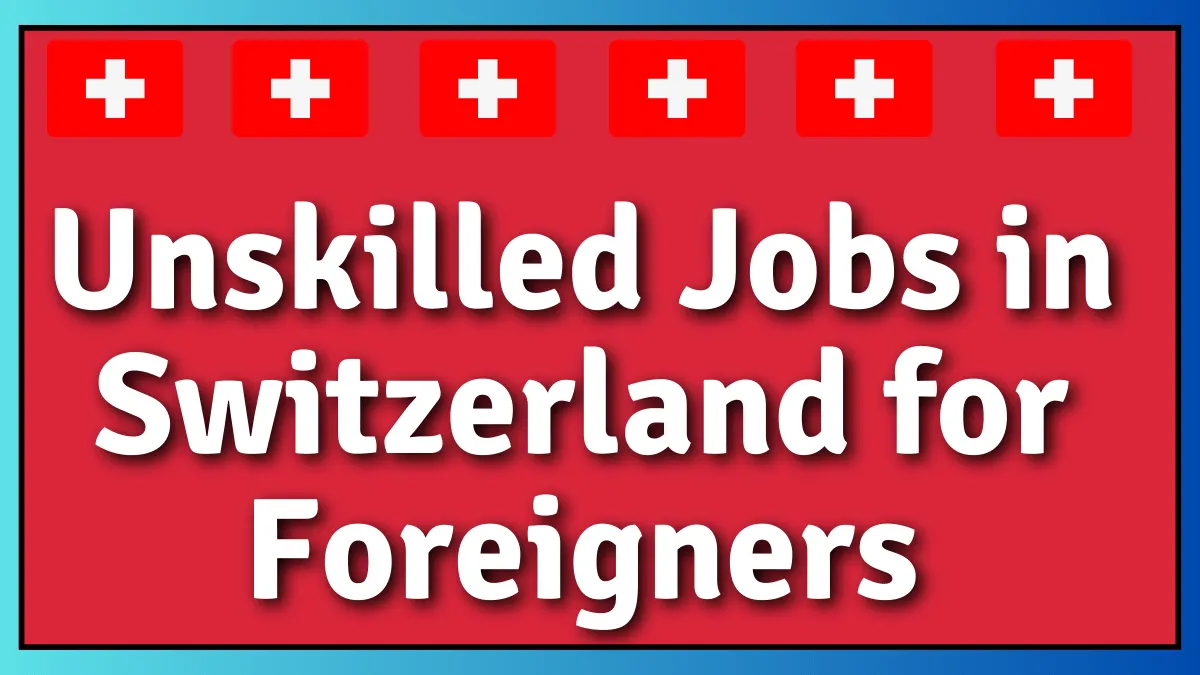South Korea has become one of Asia’s most attractive destinations for foreign workers. Known for its advanced technology, booming entertainment industry, and modern lifestyle, the country is also dealing with a serious labor shortage. With one of the lowest birth rates in the world and a rapidly aging workforce, South Korea needs foreign talent more than ever in 2025–2026.
From factory and construction jobs to high-paying IT and engineering roles, South Korea offers opportunities across a wide range of industries. Salaries for foreigners typically range between ₩28 million and ₩70 million per year (roughly USD $21,000–$52,000), depending on skills and industry.
To attract workers, the government has expanded visa programs such as the E-7 Skilled Worker Visa and H-2 Employment Visa, making it easier for foreigners to live and work in Korea.
Why South Korea Needs Foreign Workers
Several economic and social trends have made immigration a necessity:
-
Low fertility rate: Korea has the world’s lowest birth rate (0.72 in 2023), shrinking its future workforce.
-
Aging population: More than 20% of Koreans will be over 65 by 2030.
-
Labor shortages: Construction, manufacturing, caregiving, and IT face thousands of vacancies.
-
Global competition: Korea must compete with Japan, Canada, and Australia for international workers.
As a result, South Korea is now more open to hiring foreigners in both blue-collar and white-collar sectors.
Jobs in Demand for Foreigners (2025–2026)
1. Manufacturing & Factory Jobs
-
Roles: machine operators, assembly line workers, electronic parts production, food processing.
-
Salary: ₩28M–₩40M/year (USD $21k–$30k).
-
Why: Korea’s factories need stable workers, and fewer locals are willing to take these jobs.
2. Construction & Skilled Trades
-
Roles: welders, carpenters, electricians, heavy equipment operators.
-
Salary: ₩32M–₩45M/year (USD $24k–$34k).
-
Why: Massive infrastructure projects and housing demand.
3. Caregiving & Social Services
-
Roles: elderly caregivers, hospital assistants, home support workers.
-
Salary: ₩28M–₩38M/year (USD $21k–$28k).
-
Why: Korea’s elderly population is growing fast, creating long-term demand.
4. IT & Technology
-
Roles: software engineers, data analysts, AI researchers, cybersecurity specialists.
-
Salary: ₩50M–₩70M/year (USD $37k–$52k).
-
Why: Korea is home to global giants like Samsung, LG, and Naver, driving demand for tech talent.
5. Education & Language Teaching
-
Roles: English teachers, STEM subject teachers.
-
Salary: ₩30M–₩45M/year (USD $22k–$34k).
-
Why: English remains essential in schools and business.
Salary Breakdown by Industry
| Industry | Average Annual Salary (KRW) | Average Annual Salary (USD) | Notes |
|---|---|---|---|
| Factory/Manufacturing | ₩28M – ₩40M | $21k – $30k | Easy entry, stable demand |
| Construction/Trades | ₩32M – ₩45M | $24k – $34k | Physical work, high demand |
| Caregiving/Healthcare | ₩28M – ₩38M | $21k – $28k | Growing elderly population |
| IT & Technology | ₩50M – ₩70M | $37k – $52k | Highest-paying jobs for foreigners |
| Education/Teaching | ₩30M – ₩45M | $22k – $34k | English teachers in demand |
IT and engineering offer the highest salaries, while factory and caregiving jobs are the easiest entry points.
Visa Pathways for Foreign Workers
1. E-9 Non-Professional Employment Visa
-
For factory, agriculture, construction, and caregiving jobs.
-
Duration: Up to 4 years and 10 months.
-
Requirements: No degree required, but must pass Korean language test (TOPIK).
2. H-2 Work and Visit Visa
-
For ethnic Koreans (from China, former USSR countries) and some other categories.
-
Allows work in service, manufacturing, and construction.
3. E-7 Skilled Worker Visa
-
For professionals in IT, engineering, and specialized fields.
-
Requires a bachelor’s degree or relevant work experience.
-
Leads to permanent residency (F-2 or F-5 visas).
4. D-2/D-4 Student Visas → Work Pathway
-
Many foreigners enter as students, then transition to E-7 visas after graduation.
Step-by-Step Application Guide
Step 1: Choose Industry & Visa Path
-
Decide if you’re aiming for blue-collar jobs (E-9, H-2) or skilled roles (E-7).
Step 2: Meet Requirements
-
Language: Basic Korean (TOPIK Level 1–2 for E-9; higher for E-7).
-
Education: Bachelor’s degree for skilled visas; not needed for factory/care jobs.
-
Age: 18–40 for most categories.
Step 3: Secure a Job Offer
-
Apply via:
-
Work in Korea portal (official).
-
Job platforms: Saramin, JobKorea, WorknPlay.
-
Language schools and recruiters for teaching roles.
-
Step 4: Employer Applies for Visa Confirmation
-
Employer must submit paperwork to Korean Immigration.
Step 5: Apply for Visa at Korean Embassy
-
Required documents: passport, job offer, health certificate, police clearance, and language test results.
Step 6: Arrive in Korea & Register
-
Within 90 days, register for Alien Registration Card (ARC).
-
Enroll in health insurance and pension system.
Step 7: Path to Permanent Residency
-
Skilled professionals (E-7 visa holders) can apply for F-2 residency after 3 years, and F-5 permanent residency after 5 years.
Benefits of Working in South Korea
-
Strong job demand: Vacancies across multiple industries.
-
Good salaries: ₩28M–₩70M per year.
-
Modern lifestyle: Advanced technology, transport, and safety.
-
Path to PR: Long-term visas allow residency and eventually citizenship.
-
Cultural experience: Language learning, K-pop, Korean cuisine.
Challenges for Foreign Workers
-
Language barrier: Most jobs require at least basic Korean.
-
Work culture: Long hours and strict hierarchies can be tough.
-
High housing costs: Especially in Seoul.
-
Visa restrictions: E-9 workers cannot easily change jobs.
-
Integration: Social acceptance of foreigners still evolving.
Quick Visa Comparison
| Visa | For Whom? | Duration | PR Pathway | Family Allowed? |
|---|---|---|---|---|
| E-9 | Factory, construction, agriculture | 4 years 10 months | No (must switch visas) | No |
| H-2 | Ethnic Koreans, unskilled workers | 3 years | Limited | Yes |
| E-7 | Professionals (IT, engineering) | 1–3 years, renewable | Yes (F-2/F-5) | Yes |
| D-2/D-4 → E-7 | Students transitioning to skilled jobs | Varies | Yes | Yes |
Conclusion
In 2025–2026, South Korea is one of the most promising countries in Asia for foreign workers. With factory jobs, construction roles, caregiving, teaching, and high-paying IT careers, foreigners can earn between ₩28M and ₩70M per year while building a long-term future.
Whether you’re entering through the E-9 visa for factory jobs or the E-7 skilled visa for IT and engineering, South Korea offers opportunities not only for income but also for permanent residency and cultural enrichment.
For anyone looking for work abroad, South Korea has a clear message: we need skilled and hardworking foreign workers — and the doors are open.


